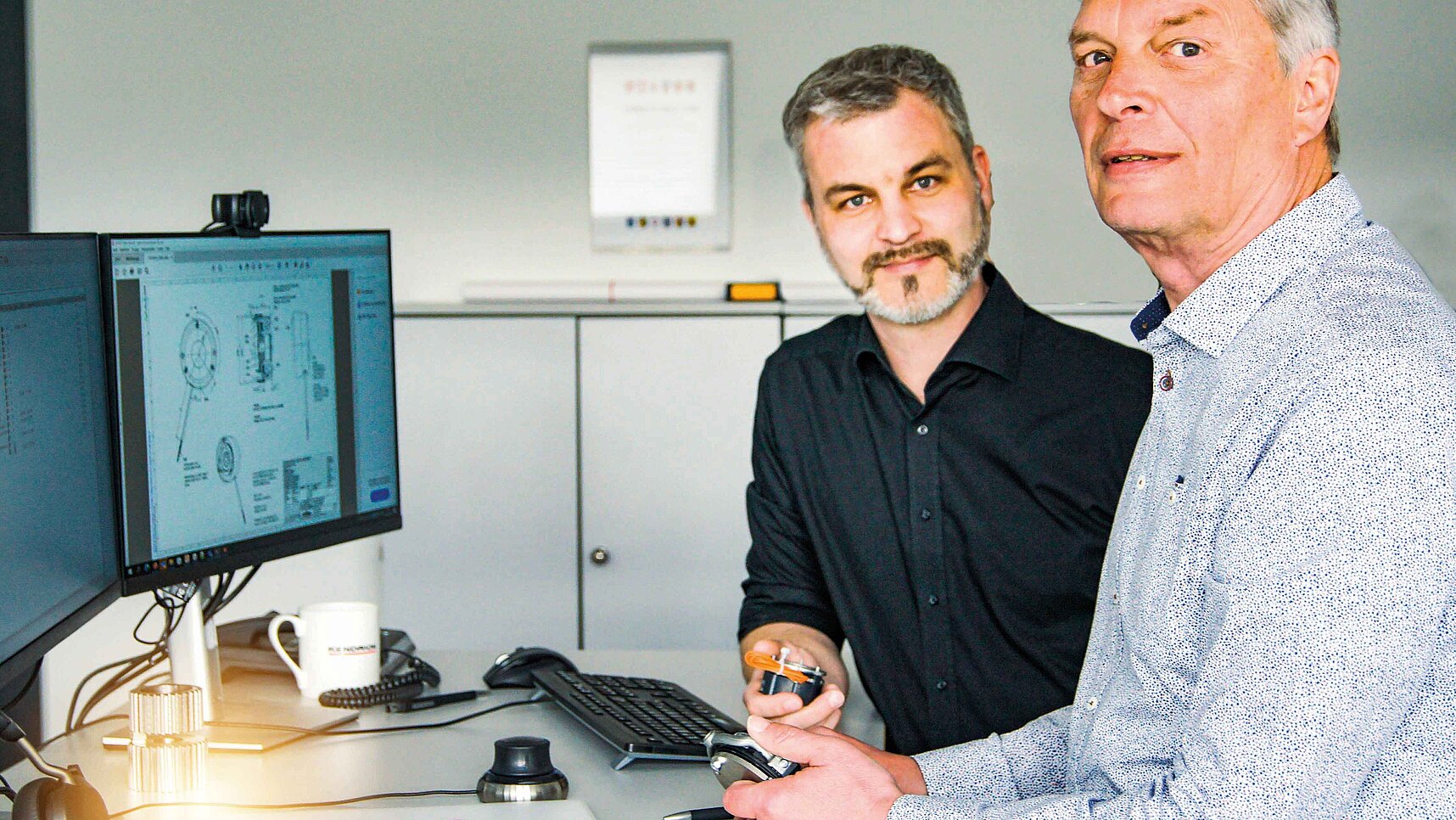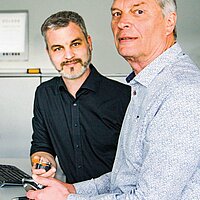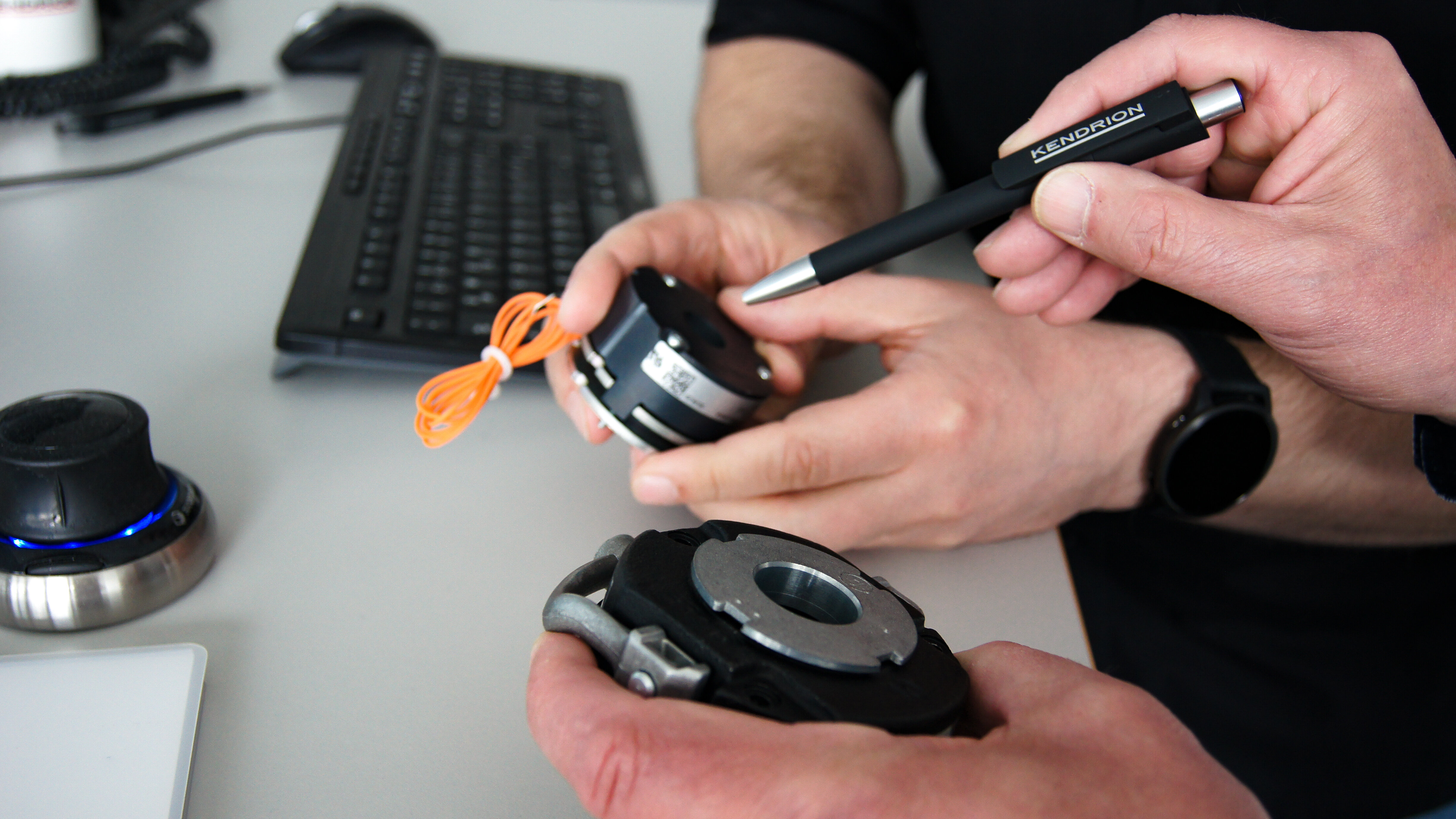1. Fail-Safe principle: Where is the connection between an industrial brake and a baggage cart?
Especially young people associate the word ‘fail’ with Internet videos of falls, crashes, and accidents. To prevent our brakes from being shown in such a fail video, they are designed according to the fail-safe principle. This means that the brakes build up the torque which is required in case of a failure of the electrical activation, a cable breakage, a power failure, or similar. This clearly distinguishes industrial brakes from functional brakes, e.g. in vehicles, where the fail-safe principle is also based on a dual-circuit system but the brake only works, if actively applied by the driver. Exception: In shopping or baggage carts, the fail-safe principle is also frequently applied so that the brake has to be actively released to move the car.
2. Holding brake with emergency stop: To hold or to stop - that is the question
But isn’t holding and stopping the same thing, really? Why is there a holding brake with (emergency) stop function? A careful choice of words is crucial here: Stopping describes the process of negative acceleration, while holding means to rest in a position.
The operating principle of the spring-applied brake - the generation of braking torque by pressure springs applying an axial force to friction linings - has existed for quite a while. The kinetic energy of the motor and of the load to be slowed down are transformed into thermal energy. These brakes are called service brakes.
Today, the stopping function is often carried out by the motor with the respective control. The brake then fulfils the task to keep the masses in a certain position. The braking is only effected from very low rotational speeds to prevent a sagging of the load or to hold in a parking position. The function of a service brake to brake and subsequently hold a mass in motion is only required in an emergency, e.g. in case of a defective drive system.
3. Organic friction linings: The heart of the spring-applied brake
The organic friction lining is the heart of the spring-applied brake - and decisive for its reliability. Organic friction linings consist of carbon compounds - usually natural rubber and/or synthetic resin as a binding matrix plus different additives that influence the lifetime and friction value. Different factors such as rotation speed, ambient temperature, specific heat output, and switching times determine the selection of optimized friction linings, and our knowledge of the respective influences always allows to derive customized solutions and offer suitable friction linings.
Inorganic friction linings, however, often consist of sintered materials, ceramics, or steel. The friction values of such linings are usually lower than those of organic friction linings. These friction linings, however, tend to be used whenever it comes to extremely high rotation speeds and temperatures. Due to their production process, inorganic friction linings are often more expensive than organic ones and require a more complex run-in process to achieve the optimum brake effect.
4. Friction work: Why friction is more than power loss
Friction at work is a familiar phenomenon - there are conflicts and discussions everywhere. Friction is usually not wanted, neither relational nor mechanical, as friction requires additional energy and is often seen as power loss. In bearings and sealings, a great variety of processes is applied to optimize friction, which usually means to reduce it. But friction can also be high and wanted, e.g. when tyres allow to drive around curves or brake the car. A high friction value helps to design compact and energy-efficient brakes.
In short, friction work describes the work that is caused by friction. When it comes to brakes, friction work is also called switching energy and occurs when motion is actively braked - but not when used as a mere holding brake. In case of spring-applied brakes, the friction work can be determined by multiplying the spring force, the friction value, and the friction distance covered. As friction involves wear, there is only a limited number of braking processes before the brake needs to be maintained or replaced. Details can be found in the technical specifications of the respective brake.
5. Opening time: Has nothing to do with corona
At the latest since the Covid pandemic, everyone has an idea of opening times - ventilate for five minutes every 20 minutes. In relation to brakes, however, opening time has a different meaning. The release of a brake refers to its opening or disengagement process. This means that the normal force acting on the brake is reduced to allow for an almost frictionless torsional twisting of the brake rotor with respect to the magnetic part of the brake so that the motor can revolve freely. Thus, the release time (disengagement time) is the time (t2) until the brake is fully opened.
In contrast, the closing process is also termed “engagement”. The duration of the closing process is represented by the engagement time (t1). It consists of the delay time (t11 - time between current switch-off and rise of braking torque) and the rise time (t12 - time from start of torque rise to reaching 90% of the nominal torque).
6. Pole gap: Can also be found at your refrigerator door
The fridge is often used as a magnetic pinboard - to put up addresses, shopping lists, or flyers of delivery services. The first pizza flyer can still be easily attached with a magnet. The more flyers you have, the wider is the distance and therefore the effective force of the magnet - until the flyers drop to the floor. Thus, the gap determines the attraction of the magnet.
Likewise, the work capacity of a spring-applied brake is determined, among other things, by the size of the outer resp. inner pole of the magnetic circuit. The geometric design of the pole faces influences the opening and engagement times. In this context, the pole gap - an intended gap between the inner and the outer pole - plays a major role. By this pole gap, the engagement time can be reduced, thus gaining a faster build-up of the braking torque. You need to be aware, however, that this pole distance also involves an extension of the opening time.
7. Toothed intermediate ring: Don’t call it piercing!
When first hearing the term, you might associate toothed intermediate ring with the “shining” smile of a teenager, a device for cleaning teeth, or a dentist’s instrument.
In fact, the toothed intermediate ring is a unique selling proposition from Kendrion INTORQ to reduce the running noise and increase the lifetime of gearings that are utilized in brakes for the torque transfer from the shaft to the brake rotor. This thin-walled, wavelike ring is placed between the hub and the rotor that are usually designed as a splined shaft profile.
8. Bridge half-wave rectifier: Can transfer or cut off the voltage
For the operation of mobile, battery-operated devices such as smartphones, notebooks, or cordless screwdrivers, the typical alternating current (230 V AC, 50 Hz) from the grid is transformed into direct current (e.g. 5 V DC). Our modern spring-applied brakes are also operated by direct current. The power supply in the industrial sector is realized by alternating current from the public electricity network. Thus, it is necessary to transform this alternating current into usable direct current. The transformation can be achieved, among other things, by bridge rectifiers in which the diodes are arranged according to the Graetz system. With bridge rectification, the negative part of the alternating current is transformed into a positive part. In contrast, a half-wave rectifier that cuts off the negative part of the alternating current is also used. The effective voltage of the bridge rectification is twice as high as the effective voltage of the half-wave rectification. The bridge half-wave rectifier is a combination of these two rectifiers. By means of this rectifier and the proper dimensioning of the coil voltage, it is possible to realize an overexcitation or reduction of the holding current.
9. Overexcitation: The magic of anticipation - alas, just briefly
Just before Christmas or a birthday, it is a well-known phenomenon that children are very excited, even overexcited. This condition doesn’t usually last too long: Once the gifts are handed out, the normal state is quickly reached again. The same is true for brakes, where a temporary overexcitement can be achieved by a brief increase of the voltage. This voltage increase allows to use stronger springs and thus achieve a higher frictional torque. After that, the voltage can be lowered to the rated value again to save energy. In order to prevent an overheating of the brake, the condition of overexcitement is always just possible for a short period of time. Why that? The distance between the magnet housing and the armature disc is wide in applied state which disturbs the magnetic flux and thus requires a high current to bridge the air gap. When the armature disc lies against the magnet housing and the distance becomes quite narrow, the current can be lowered, while the armature disc is still safely held.
Are you curious about the industrial brakes from Kendrion? Find a wide range of brakes on our website!





